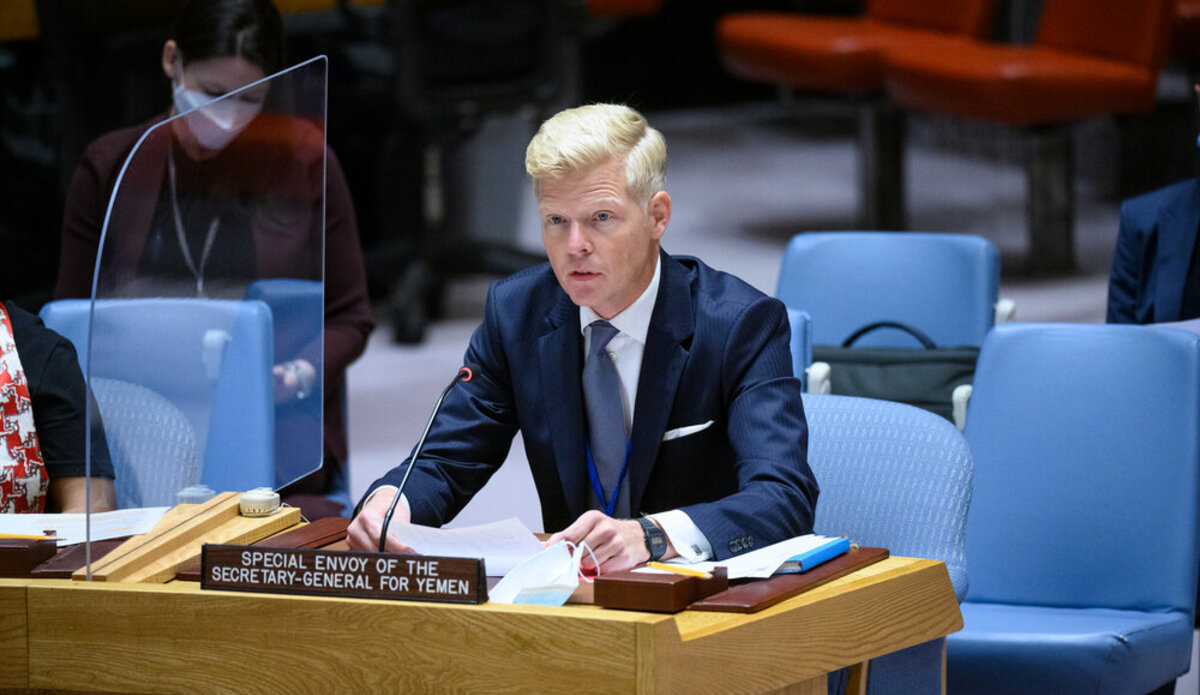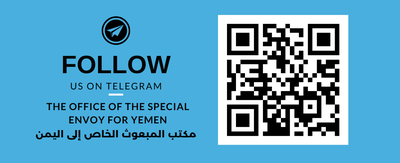A year after the Truce Agreement: the way ahead
By: The UN Special Envoy for Yemen, Hans Grundberg
A year ago today, the warring sides in Yemen agreed to a Truce that lasted six months and expired last October. It was a moment of hope and a rare opening in a cycle of almost unabated violence and escalation over eight years. Even after its expiration, the Truce is broadly holding and many of its elements continue to be implemented. But the Truce’s most significant promise is its potential to jumpstart an inclusive political process aimed at comprehensively and sustainably ending the conflict.
Today, with renewed Yemeni, regional, and international momentum towards peace in Yemen, this potential could materialize. But there are still significant risks. The military, economic and rhetorical escalation of recent weeks is a reminder of the fragility of the Truce’s achievements if they are not anchored to political progress towards a peaceful resolution of the conflict.
There is a need to protect the gains of the Truce and to build on them towards more humanitarian relief, a nationwide ceasefire, and a sustainable political settlement that meets the aspirations of Yemeni women and men. This requires a process that brings Yemeni stakeholders together to implement agreed measures, diffuse tensions, and collaboratively think through the key questions of security, governance institutions and transitional design. Both parties must be willing to sit together and responsibly engage in serious dialogue. This is the measure of their commitment to a future political partnership.
Despite the Truce’s lasting impact, no temporary agreement can sustainably address the prolonged suffering of all Yemenis. Only a comprehensive solution can start the labor of recovery from the war’s devastating toll on the lives of civilians. Short-term measures are bandages. At times, they are necessary, even desperately needed. But they don’t preclude the need to address the underlying, long-term problems. At this critical time, any new temporary or partial arrangement needs to include a clear commitment from the parties that ensures it is a step on the course of a peaceful solution that is reached through the consensus of Yemenis in an inclusive political process.
Everything is connected in Yemen. Addressing daily life struggles such as food prices, basic services, unemployment, freedom of movement, and security, is linked to tackling broader issues such as the monetary policy, a ceasefire, accountable governance institutions, human rights, and the overall stability that would allow for investments and development. The economy cannot be addressed separately from the political and military tracks and vice versa. For the past year, and in addition to the implementation of the Truce and working to sustain and expand its gains, my Office has been engaged in active planning and regular consultative work along those three tracks.
On the military and security track, as part of the Truce, my Office set up the Military Coordination Committee (MCC) bringing together representatives of the parties. We continue to engage MCC members to support maintaining calm in Yemen, and to assist the parties to prepare for a ceasefire. We also work with Yemeni experts, security actors, and civil society groups to advance an inclusive and accountable approach to security, and to plan for a viable and sustainable ceasefire.
On the economic track, my Office has consistently engaged and consulted the parties and their technical representatives, as well Yemeni civil society organizations, independent experts, research institutions, the Yemeni private sector, and international financial institutions. Through this work, my office developed possible solutions to ensure the accountable management of Yemeni resources and revenues, and options for the design of mechanisms through which the parties can engage with one another, as well as with international and regional partners and Yemeni technical experts to address both short- and long-term economic priorities.
I have been engaging politically with the parties and other Yemeni actors, as well as regional and international stakeholders, before, during and after the Truce to build consensus around launching an inclusive political process. These engagements benefited from the political space created by the Truce and the ongoing regional and international momentum. I have also listened and talked to a diverse range of Yemeni women, youth, and civil society organizations. Yemeni men and women speak of the future of their country with passion, great aspiration, and a clarity of vision for a war-free Yemen that is stable, just, and prosperous. A sustainable political solution will need to deliver on this vision and should be based on an agenda that is not solely determined by the parties but includes a broader range of Yemeni stakeholders and addresses the priorities of all Yemeni people.
Ultimately, achieving peace is the responsibility of the parties. There is no shortage of ideas, preparation, or international support to move forward towards sustainable peace and development in Yemen. But the minimum level of trust required for constructive discussions is hard earned, and easily lost. Moments like now are fleeting and precarious. This is not the time for escalation and zero-sum games. More than ever, now is the time for dialogue, compromises, and a demonstration of leadership and serious will to achieve peace.
 UN
UN







